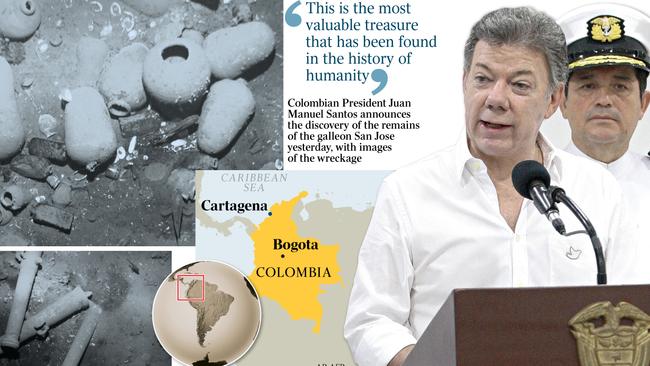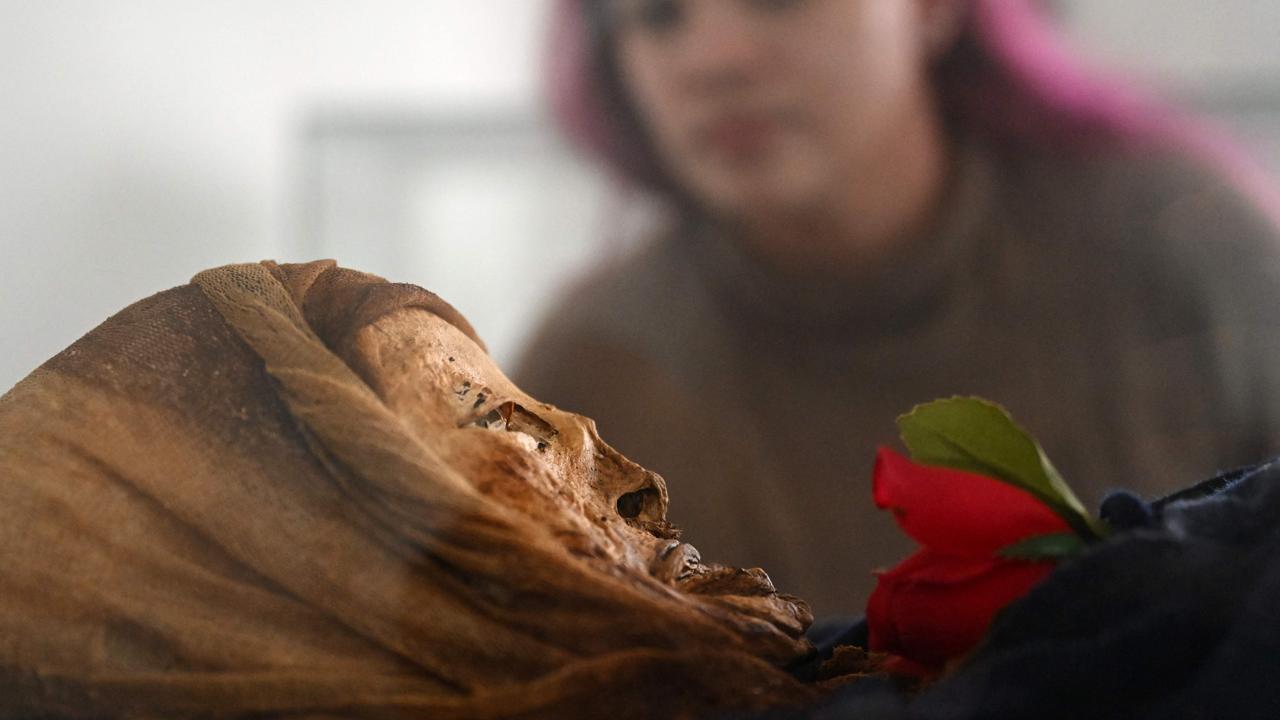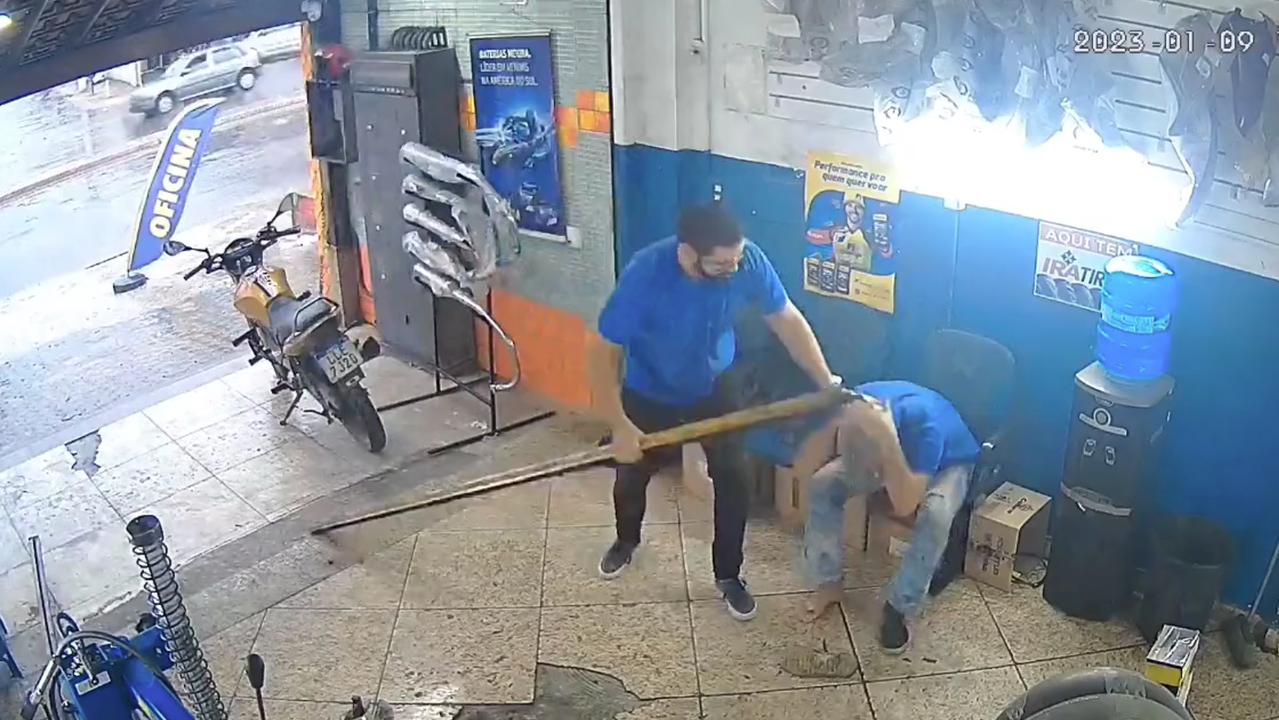Colombian governments confirms recovery of $3 billion sunken treasure
IT WAS the most sought-after sunken treasure in the world, eluding governments and treasure hunters alike. Until now.

IT’S been described as the holy grail of shipwrecks and for over three centuries it sat in a watery grave somewhere at the bottom of the Caribbean Sea.
Despite efforts from governments and independent treasure hunters, the valuable loot of gold, silver and precious stones aboard an 18th century Spanish ship sunk by the British in 1708 remained elusive. Until now. The Colombian authorities confirmed on Sunday they had retrieved the sought-after bounty aboard the sunken San Jose galleon. The magnitude of the discovery was not lost on the country’s president, Juan Manuel Santos, who didn’t hold back his excitement. “This is the most valuable treasure that has been found in the history of humanity,” he proudly declared. Estimates of total value of the recovered loot vary but most put the treasure’s value at about $3 billion. Dionisio Velez, the mayor of coastal city Cartagena, off which the ship was discovered, echoed the lofty sentiment of the president, calling the discovery “an unprecedented event for the country”. The official discovery of the shipwreck ends years of searching and comes after a US court decision in 2011 that declared the shipwreck the property of the Colombia, a government that just got a whole lot richer. The San Jose has long been the source of fascination and popular legends. Some reports claimed she was carrying 116 chests of emeralds, two tons of platinum and the personal wealth of the Viceroy (King) of Peru. The galleon, a wooden ship used at the time for warfare and later trade, was sunk off Colombia’s Caribbean coast in June 1708 during a failed attempt by the British to capture the lucrative cargo. The ship had set sail from South America and was carrying riches destined for King Philip V’s war chest as he fought Britain in The War of Succession. However it never made it back to the Spanish King and was sunk after a 90-minute battle with HMAS Expedition. Commodore Charles Wager in charge of the British ship had intended to take control of the San Jose before it blew up and sank. “I believe the ship’s side blew out, for she caused a sea that came in our ports,” he wrote in his diary. “She immediately sank with all her riches.” Only a handful of the ship’s crew of 600 survived the ordeal. Although recovery efforts have found plenty of other wrecks in the region, the San Jose’s location largely remained a mystery until now. Researchers confirmed the identity of the ship — which was lying on its side — by its unique bronze cannons with engraved dolphins as they continue to closely examine the treasured artefacts. “The amount and type of the material leave no doubt of the identity” of the shipwreck, Colombian Institute of Anthropology and History director Ernesto Montenegro said. A US-based salvage company Sea Search Armada claimed in the early 1980s that it had found the final resting place of the San Jose. The company was previously engaged in a long-running battle with the government of Colombia claiming billions of dollars for a breach of contract until the US court ruled in favour of Colombia in 2011. While the company believed they had discovered the location of the ship, the legal dispute delayed the search effort. After the court ruling, a team of Colombian and foreign researchers, including a veteran of the group that discovered the wreck of the Titanic in 1985, studied winds and currents of the Caribbean 307 years ago and delved into colonial archives in Spain and Colombia searching for clues. Experts have now confirmed they found the shipwreck “in a place never before referenced by previous research”, Colombian president Juan Manuel Santos said Sunday. “Without a doubt, we have found, 307 years after it sank, the San Jose galleon. We will build a great museum here in Cartagena. “(It) constitutes one of the greatest — if not the biggest, as some say — findings and identification of underwater heritage in the history of humanity.” There could be up to 1000 shipwrecks off the Caribbean coast of Colombia, but of those only between six and 10 had a large cargo of treasures, anthropologist Fabian Sanabria told Agence France-Presse. The biggest find, and the most sought-after, was the San Jose, he said.



